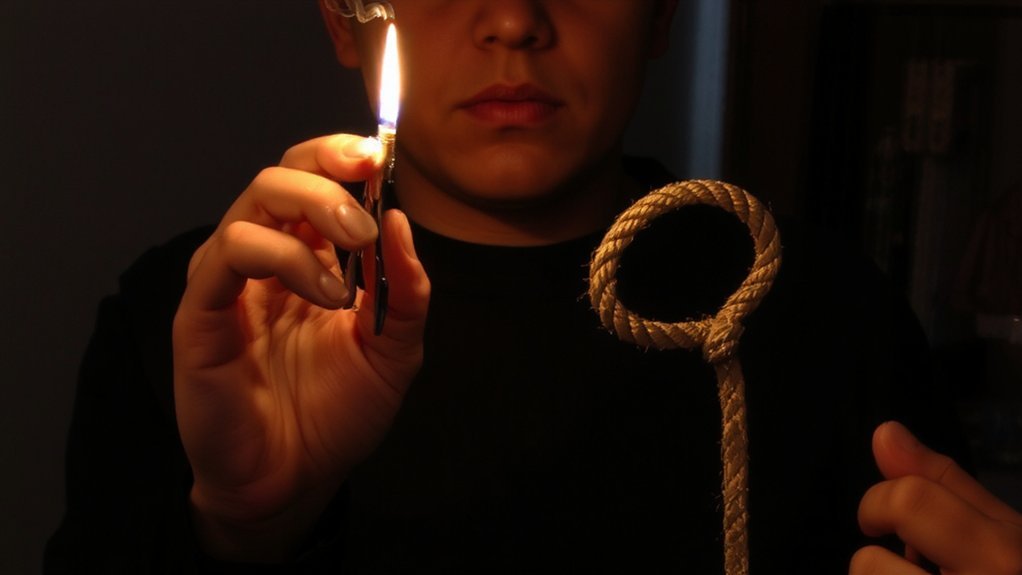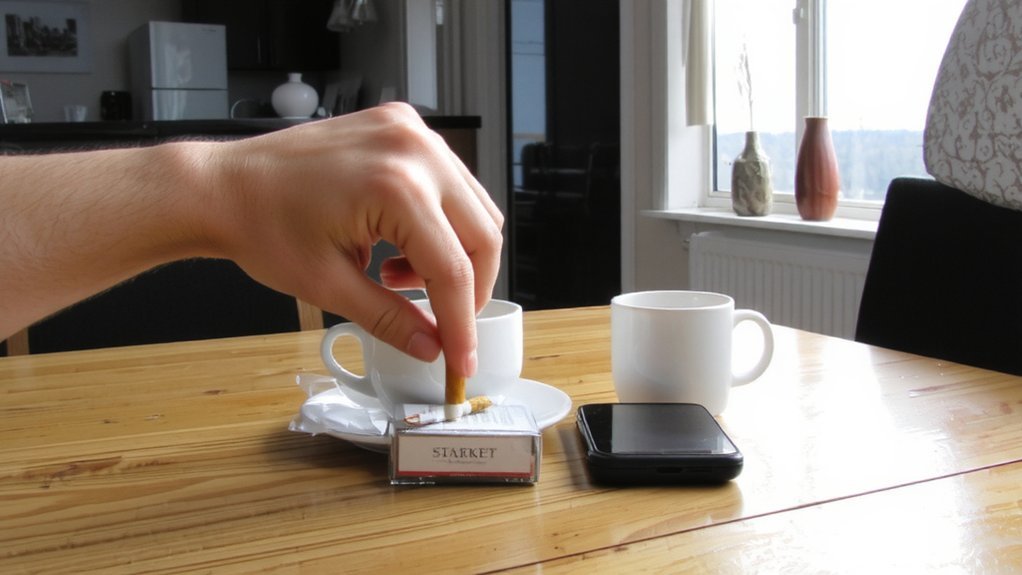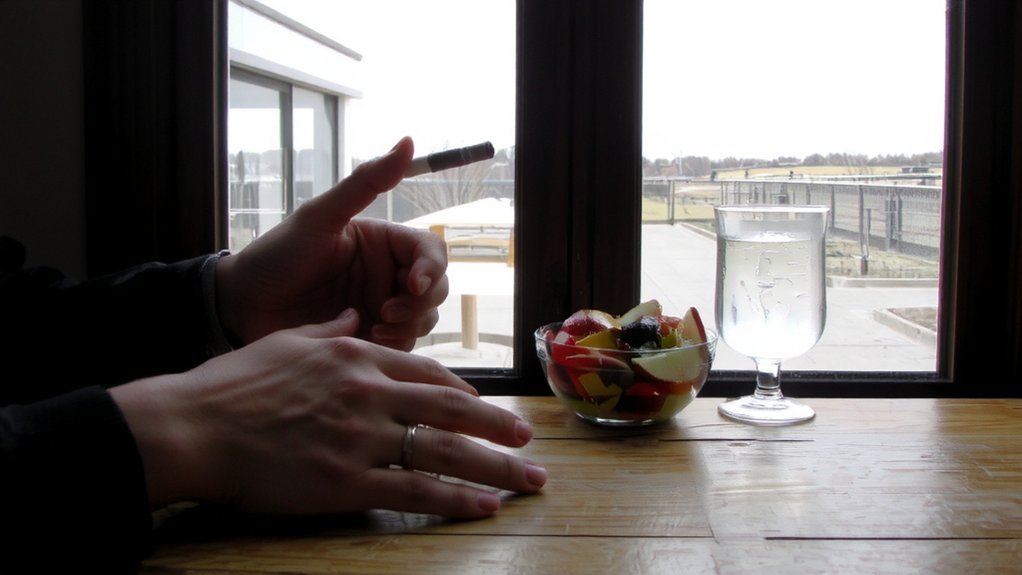You can break a bad habit by identifying its trigger, routine, and reward, then swapping the routine for a tiny, reliable alternative. Change your environment, use if–then plans, and practice consistently. It isn’t quick, but it is manageable — here’s the first practical step to get you moving.
How Habits Are Formed in the Brain

How do habits form in the brain? You repeat actions and your brain links sequences into efficient routines.
Neurons that fire together wire together, strengthening synapses through plasticity.
The basal ganglia package repeated behaviors into chunks so you can execute them with little conscious effort.
Dopamine signals reinforce patterns by tagging actions that led to reward or relief, making those circuits easier to activate next time.
Over time, control shifts from deliberate prefrontal networks to automatic subcortical loops, so you’ll act before you think.
Habits conserve cognitive energy but also resist change because the reinforced pathways lower the threshold for activation.
Understanding this storage and reinforcement process prepares you to interfere with habitual circuits intentionally. You can then design steps to weaken those links.
Identifying Your Triggers and Cues

Those brain loops give you clues: if habits form from repeated cues and rewards, you can stop them by spotting the cues that light up the circuit.
Start by keeping a simple log for a week: note time, location, emotional state, people present, and what happened just before you slipped. Be specific—write down tiny details.
Review entries to find patterns you miss in the moment. Use alerts or labels to remind yourself when a high-risk context approaches.
Try changing one element of the situation to see if the urge fades. Tell a friend what you’re watching for; social feedback sharpens detection.
Over time you’ll catch subtle cues—sensations, sounds, or thoughts—that reliably predict the unwanted response, giving you control. Practice makes noticing these cues automatic.
Mapping the Habit Loop: Trigger, Routine, Reward

Every habit follows a simple loop: trigger, routine, reward.
You start by watching yourself—note where, when, who, and what you feel just before the behavior. Log each instance for several days, recording time, location, emotion, preceding thought, and immediate action.
For the routine, describe steps precisely: what you do, how long it lasts, and any micro-decisions that keep it going.
For reward, test what you’re actually getting: comfort, distraction, social connection, or an energy change. Rate how satisfying the outcome is on a scale of 1–5 and note how long the effect lasts.
Mapping several cycles reveals patterns and predictable moments when the loop activates, giving you clear targets to interrupt or modify the sequence. And measure progress weekly to confirm the habit weakens meaningfully.
Replace Unwanted Behaviors With Satisfying Alternatives

Because habits crave a payoff, you won’t stop them by sheer willpower alone—swap the old routine for a new behavior that delivers the same reward.
Identify the reward you crave—stress relief, social connection, stimulation—and list realistic alternative actions that give that payoff quickly.
If you snack when bored, try chewing gum, herbal tea, or a short walk that offers sensory change.
If you check your phone for validation, send one thoughtful message or jot a quick gratitude note instead.
Practice the substitute immediately after the trigger so the brain links reward to the new action.
Track success, tweak options that don’t satisfy, and celebrate small wins to reinforce the healthier routine until it becomes automatic.
Be patient; change takes repeated, intentional practice and persistence.
Reshape Your Environment to Reduce Temptations

If you want to break a bad habit, change the space around you so the temptation never gets a foothold: remove cues that trigger the behavior, make the tempting option harder to access, and surround yourself with prompts for the new habit so you need less willpower to choose it.
Clear sight lines: put junk food in opaque containers or out of the house, tuck your phone away during focused time, rearrange furniture to discourage automatic behaviors.
Add visible reminders for alternatives — a water bottle on your desk, running shoes by the door, sticky notes with your goal.
Change timing and access: set barriers like passwords, timers or storage that’ll require extra steps. Small physical edits reduce friction and make better choices default now.
Start Small: Gradual Steps and Consistent Practice
Starting small makes lasting change manageable: choose a tiny, specific action you can do reliably (for example, one minute of reading or one push-up), do it at the same time each day, and keep it up until it feels automatic before you increase the dose.
Begin with a goal so modest you can’t skip it. Track it with a mark so you notice streaks.
Once it’s automatic, increase dose slowly—add seconds or a extra rep. Keep practice brief and routine to lower friction.
Celebrate consistency; a small reward reinforces repetition. If you slip, reduce task and restart immediately.
Tell one person or pair the new action with an existing habit for accountability. Tiny, steady gains compound into a durable replacement for the old behavior.
Use Implementation Intentions and Mindfulness
When you pair a specific implementation intention—“When X happens, I’ll do Y”—with a short mindfulness practice, you turn vague goals into concrete, automatic responses and create space to notice urges without acting on them.
Decide precise cues and replacement actions: “When I feel the urge to snack at 3 p.m., I’ll drink a glass of water.”
Rehearse the plan mentally, cueing the brain for automatic follow-through.
Add a brief mindfulness pause—three deep breaths or a ten-second scan—so you observe sensations and choose instead of reacting.
Track attempts and tweak if cues miss.
Over time, repetition wires the new response into habit. You’ll reduce slip-ups by making choices deliberate, predictable, and easier to repeat under stress. Celebrate small wins to reinforce the new pattern daily.
Leverage Social Support and Role Modeling
After you’ve set clear plans and learned to notice urges, bring other people into the effort to amplify momentum and model better choices.
Tell trusted friends or family what you’re changing, why it matters, and how they can help—remind you, celebrate wins, or gently call you out when you slip. Pair up with someone pursuing a similar goal so you can compare strategies and hold each other accountable.
Seek role models—colleagues, mentors, or peers—whose habits you admire; observe their routines, ask practical questions, and adapt small behaviors that fit your life.
Use social commitments and public accountability sparingly but deliberately: announcing progress to others raises stakes and motivation. Small social shifts create a supportive environment that makes new habits easier to maintain. Stay consistent.
When to Seek Clinical or Structured Interventions
If your efforts keep failing or the habit’s harming your health, relationships, job, or safety, consider clinical help or a structured program.
You should seek help when cravings or impulses feel uncontrollable, when withdrawal threatens functioning, or when repeated attempts leave you feeling hopeless.
Clinicians assess underlying conditions—depression, anxiety, trauma, or substance dependence—and offer evidence-based treatments like cognitive behavioral therapy, motivational interviewing, medication, or group programs.
Structured interventions give accountability, relapse prevention skills, and tailored plans.
Ask your primary care provider for referrals, check reputable treatment directories, or consult employer-sponsored programs.
Expect measurable goals, progress tracking, and coordination with other providers.
Don’t wait until a crisis; early professional support increases the chance you’ll regain control and sustain healthier habits. It’s a strong, proactive step.
Conclusion
You can break a bad habit by spotting its triggers, mapping the routine and reward, and swapping the old response for a tiny, satisfying alternative. Reshape your environment, set clear implementation intentions, and practice consistently so new patterns stick. Use mindfulness and social support to stay accountable, and celebrate small wins. If urges keep overpowering you, don’t hesitate to seek structured or clinical help. With patience and persistence, change becomes possible and measurable progress occurs.